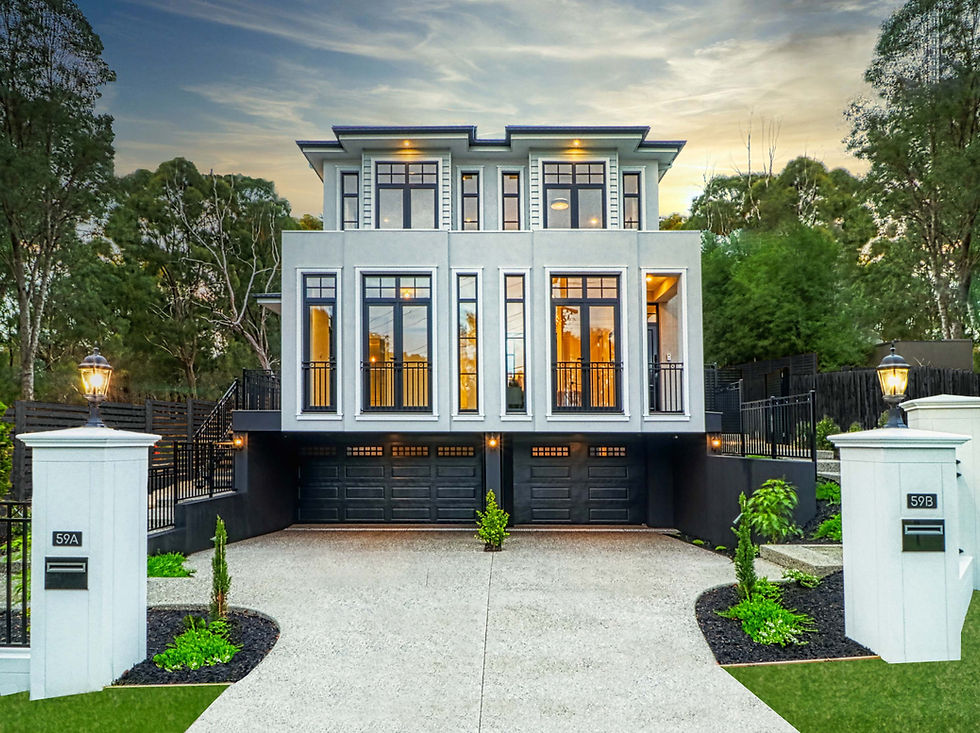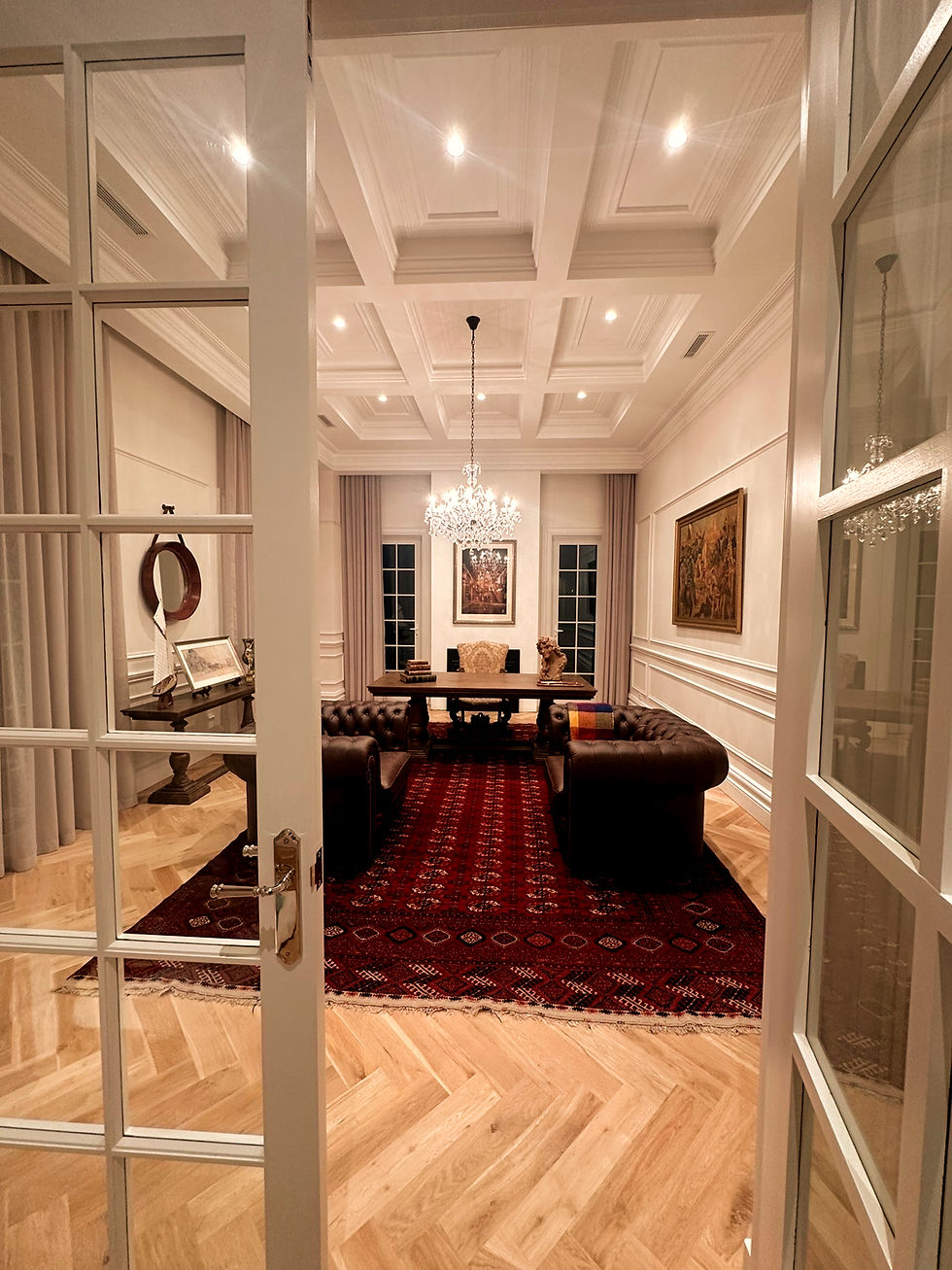Old Architecture in New Times
- Architeria Architects

- Jul 29
- 5 min read
Updated: Sep 8

Do you think of modern boxes and steel structures when you hear the word architecture? Or is architecture associated with old buildings? Type in the phrase “architecture” into a search engine, and the first images that appear are of modern architecture, curved glass walls, and concrete. However, if you type in “Architecture Italy” or “Architecture France”, the images are replaced with those of old architecture and classic buildings. An architectural tour gets a whole different meaning in Europe.
I don’t necessarily believe that architecture must relate to innovation. What it should do, however, is to improve and adapt to the present conditions. How many times can you reinvent the wheel without making it too futuristic? And do we lose the meaning of home with architecture that is significantly modern? Classic buildings are classic for a reason.

In recent years, we at Architeria Architects have observed a growing demand for classic homes. As someone biased towards traditional and timeless architecture, I have often wondered what it is that draws us to old buildings. While we at Architeria design both modern and classic buildings, we have gained a particular reputation for creating timeless homes. I share a love for classic homes with many of our clients. Building a home is one of the most significant investments most people make in their lifetime, and while the investment is highly personal, being a home, timelessness doesn’t age. Modern homes and trends evolve rapidly, but classic architecture remains timeless. But is this reason enough to admire the old?
Why We Love Old Buildings
Most of our personal preferences are evoked by emotions, and our preference in architecture is no different. There are many aspects that we associate with old architecture - reference to literature and history, to name a few. The classics in literature are filled with old architecture, from Austen to Fitzgerald. Who hasn’t watched period movies and historical TV series and been swept away by the mansions and manor homes of the past? Power, class, and aspiration - if the walls could talk. There is an established identity in old houses that speaks to continuity, inspiring us to preserve them. There is a sense of belonging - a heritage, and the idea of being part of something bigger than us that we find fascinating and irresistible.

The value of historic buildings isn't just measured in monetary terms, but also in their cultural and historical significance. There's almost an instant respect for a building that has stood for generations, not only for the visual beauty of its details, which seem old and enduring, but also for the skill and craftsmanship that went into creating these ancient marvels - skills that have been forgotten or replaced by machines.
Preserving part of our heritage is essential. Protecting our history and leaving landmarks in our cities for future generations is a legacy that stands. To understand our past and experience the reminiscence of our history makes it real and palpable. It is with horror that we read about history being erased, either to make way for new real estate or wiped away by senseless wars. A poignant example of this is the buildings in New York that were constructed during the Gilded Age, only to be replaced by high-rise buildings. I can’t help but draw parallels between modern-day buildings that draw inspiration from the past and the demolished mansions on Fifth Avenue back in the day. Then, just as now, many people were against the classic reproductions simply because they are not “old”—a point worth considering.

The Challenge of Authentic Designs
For natural reasons, the preservation and restoration of old buildings are more common in European cities than in a new country such as Australia. Not every classic architecture enthusiast can acquire a period home to take on, which may contribute to the increase in demand for classic home designs that we are witnessing. While new homes might lack history, they can still be designed to reflect timeless quality and the spirit of a classic house. When done correctly, they can significantly enhance our streetscapes more than a poorly designed modern house. But why are we seeing so many bizarre buildings that seem neither classic nor modern?

As we have experienced an increasing demand for classic designs, this trend also applies to townhouses. Maintaining a good and authentic classic design while adhering to the design guidelines of a planning scheme can prove challenging. In many older cities, townhouses were built in rows. Think about the Georgian townhouses in Belgravia, London. Shared walls and symmetry created classic streetscapes that couldn’t possibly look out of place.
Some of the criticism we raise regarding council guidelines pertains to setbacks that don’t enhance a building's appearance, as well as the request for using more than one material or colour on a façade. These rules can undermine the aesthetic integrity of classic designs. Due to these often-unnecessary guidelines, we've observed many poor and chaotic house designs, lacking symmetry, that don't belong to either the past or the present. While we don’t promote poorly executed replicas of different eras and architectural styles, just as in fashion, certain timeless elements remain appropriate – such as symmetry, balance, neutral colour tones, or the use of face brick on a façade. It’s unclear why some council guidelines oppose these, especially when requirements such as second-floor setbacks increase construction costs and do not support sustainable design. What is clear, however, is that as a result of these, we see less authentic-looking developments.

An Architectural Love Affair with Classic Buildings
Some of our clients are building for the first time, while others have previous experience. Many who are settling down and creating their “forever home” choose a classic design. There seems to be a longing for a home that feels timeless, and sometimes it is a search for homeliness that ultra-modern design cannot provide. We are just as careful when designing classic interiors as we are when creating enduring architecture. Will the kitchen still feel fresh and exciting, or will it just seem tired and shockingly out of style in ten or fifteen years? How important is it to strike a balance between old and new without the pendulum swinging too far in either direction? Our aim is often to improve, not reinvent, by preserving and reusing what works and enhancing what doesn't.
Whether you are an admirer of timeless, historical architecture or a fan of contemporary homes, achieving a sense of homecoming and comfort is a priority for the majority of clients who seek our services. After all, we all seek beauty, functionality and harmony in our environments. It is evident in the buildings around us, spanning different eras. We love what we do, and classic homes are a significant part of what we specialise in. We take pride in bringing the best of the past to the best of the present.
For a timeless design, Architeria Architects have become synonymous with quality design and prominent architecture. Call us on 03 9894 5805 or drop us a line at info@architeria.com.au to discuss how we can bring your dream home alive.
Creative Director and Interior Designer





Comments